Songwriting basics: using music theory to help come up with a melody to fit your chords
How to find notes that will work in your top line
Coming up with a memorable melody is key to writing a decent song, yet this part of the process is often the hardest hurdle to overcome. Melodies can be elusive creatures: sometimes they appear fully-formed when you least expect it; other times you can stare at a blank screen for hours with no ideas.
If you’ve ever been in the situation described above, you’ll be glad to know there are a few tricks you can use to unstick things. Starting with a blank page, here are a few ideas to get the creative juices flowing enough to get a fresh new project off the ground.
To a large extent, how your melody will end up sounding is dependent on genre - a jazz melody will probably be more complex and challenging to the ear than an out-and-out pop melody. Whatever genre you’re writing in, there’s no doubting the value of a sprinkling of music theory, and while we don’t want to get into too much detail here, knowing what notes to go for and which to avoid when working in a particular key can make all the difference.
Whether it’s a vocal or instrumental melody that you’re after, following the tips that are shown here can help you to break the deadlock and start to form an idea that could turn into your next great song.
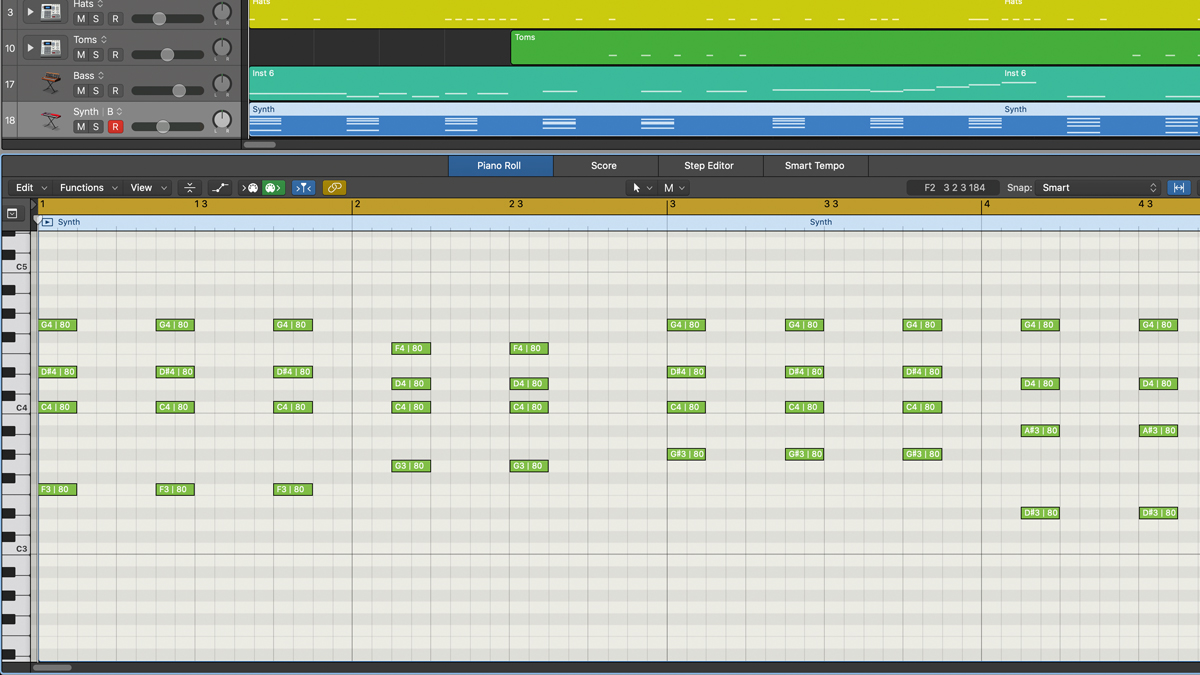
Step 1: A typical scenario is finding yourself with a chord progression you like the sound of, but needing to come up with a melody to fit over the top. Here’s one we prepared earlier. When fitting a melody to an existing progression like this, there are certain notes that you know are going to work - but what are they?
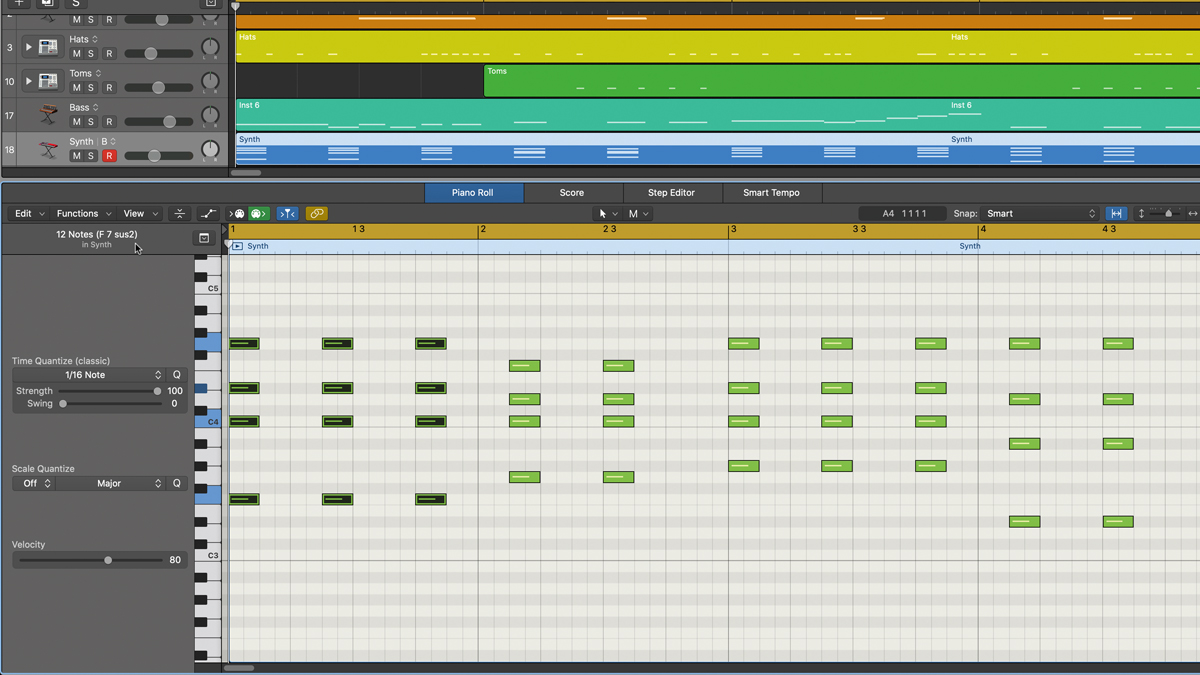
Step 2: The notes we know are going to work come from the ‘parent’ scale of whatever key our progression is in. So our first job is to work out the key of the song. Using our DAW’s chord analyser, we know our synth part is playing a four-chord progression made up of the following: F7sus2 > G7sus4 > AbMaj7 > EbMaj7.

Step 3: Listening to the progression, when we hit that fourth EbMaj7 chord, we get the feeling of having arrived ‘home’ - if we stayed on that chord, our ears would be pretty happy! So let’s assume that Eb is the root note, or ‘tonic’ of the key, and because the tonic EbMaj7 chord is a major chord, we’ll assume we’re in Eb major.
Want all the hottest music and gear news, reviews, deals, features and more, direct to your inbox? Sign up here.

Step 4: We can test this out by playing the notes of the Eb major scale (Eb, F, G, Ab, Bb, C, D) over our chords - and it works! So now we know that we can safely use the notes of this scale as a palette for creating a melody that’ll work with this progression. Let’s get on and start sketching some melody ideas!

Step 5: With seven notes to choose from, the possibilities are endless, so let’s start simple and pick one note from the scale - let’s go for F, the 2nd note, or ‘degree’ of the scale, one up from the tonic, Eb. Staying on this note introduces an element of tension, as our ears naturally want it to resolve back down to Eb.
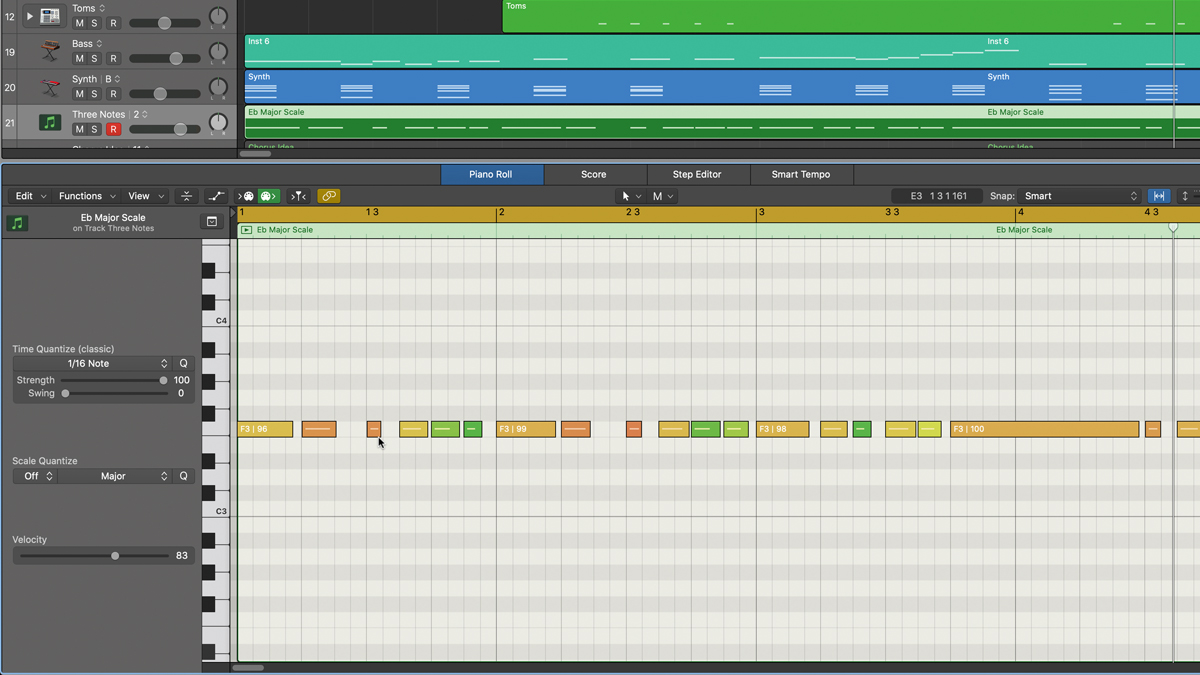
Step 6: Holding single notes isn’t that interesting, though, so let’s start adding some rhythmic elements, breaking the long notes up into shorter ones. In this first example, we’ve played a rhythm in from a keyboard, still sticking to one note, but just feeling where the notes might fall nicely against the beat.

Step 7: Now we have a rhythm, we can start playing around with the notes. Still keeping things simple, we’ll stick to a three-note limit for now, using the scale tones either side of our F note - so that’s Eb and G. To give the part a more ‘finished-off’ sound, we’ve made the last long F note resolve to a tonic Eb note.

Step 8: For a catchy chorus idea, let’s try another angle. We’ll start by filling the first bar with eighth-notes, starting with the fifth - Bb - and dropping to a major third - G - then to the tonic Eb by way of the 2nd - F. This progression down the major scale to the tonic, missing out the 4th - Ab - establishes a major feel, ideal for a chorus.

Step 9: Next, we lose the first Bb note to give a sense of rhythmic space, then extend into bar 2 with a finishing two-note flourish that ends on a long F note - this works with the underlying G7sus4 chord (G, C, D, F) and also creates the necessary tension required for our next step - a repetition with resolution.
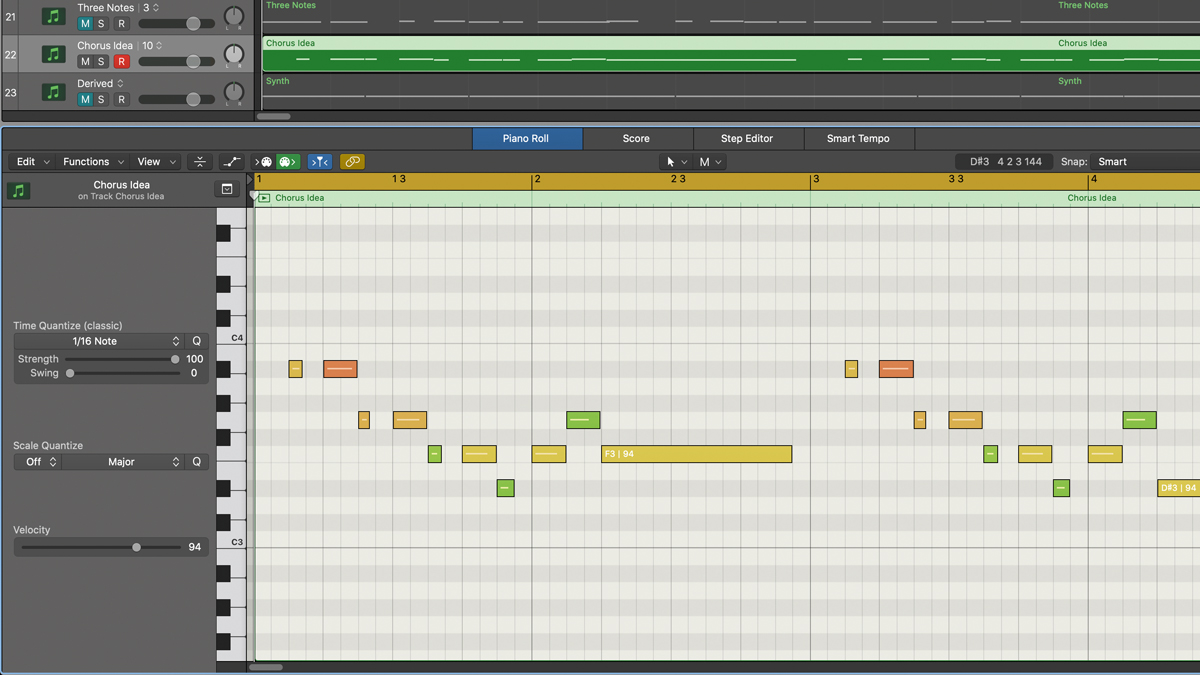
Step 10: Repetition with resolution is a handy melodic device where you repeat a phrase or series of notes that doesn’t resolve to the tonic (ie, what we created in the previous step), then resolve the repeated phrase to the tonic. So we copy our phrase, paste it into the next two bars and drop that last F note down to Eb.
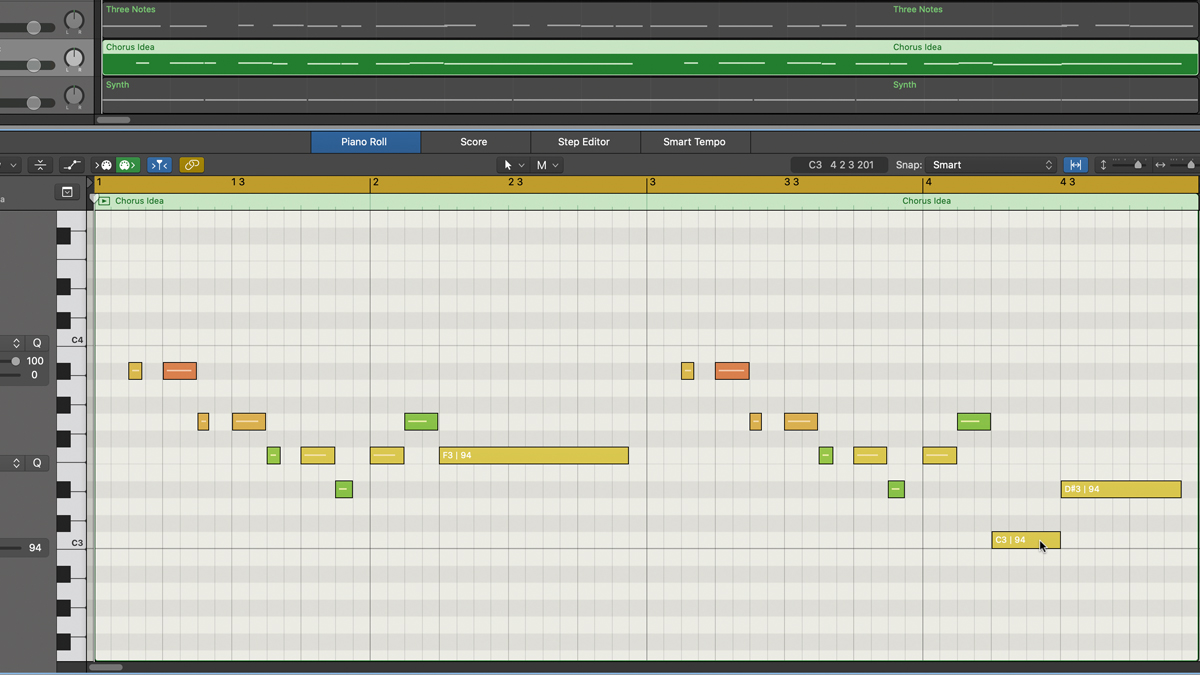
Step 11: Now we have a four-bar melody that uses a form of call and response between two phrases to create and resolve tension. Let’s prolong that tension by using a technique known as the overshoot. This is where you delay hitting your tonic by ‘overshooting’ it and landing on a different note - C in this case - before finally resolving a beat later.
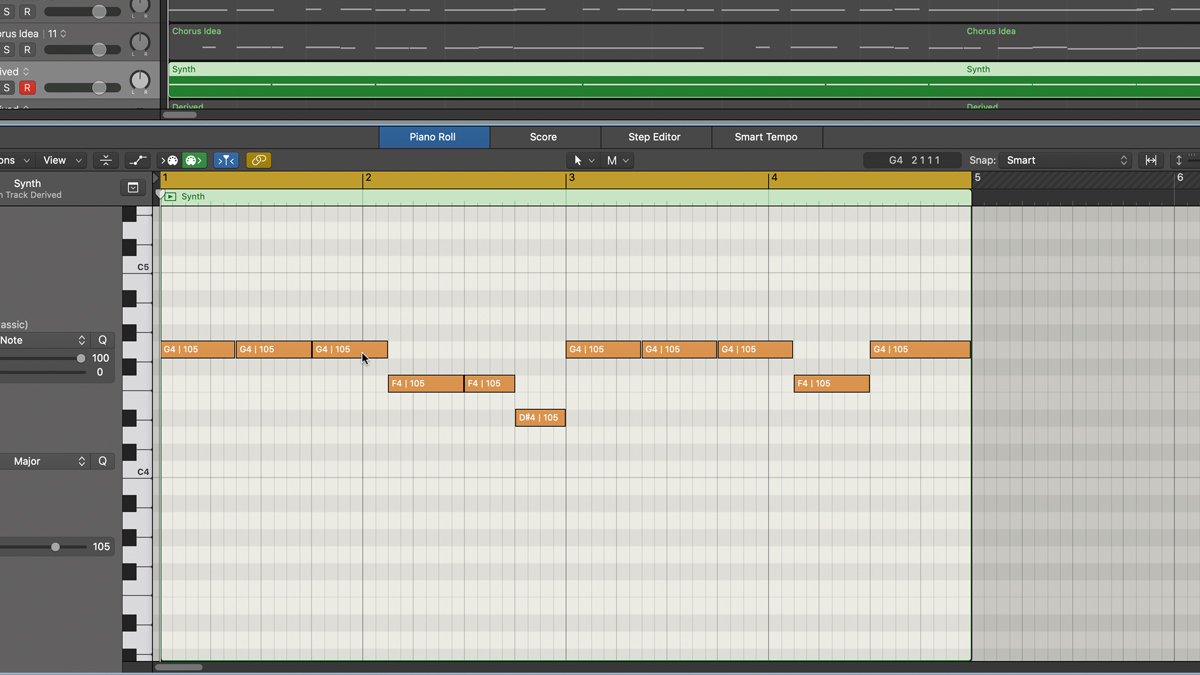
Step 12: For a final tip, try deriving your melody notes from the uppermost notes in your chord progression. Duplicate the chord track, eliminate the unwanted lower notes, then play around with the rhythm of what’s left. This mega-simple yet hooky example has been derived from the upper notes of our chords.
Pro tips
Capture the moment
Spontaneous melodies that spring unbidden from the subconscious often prove to be the best. Luckily, pretty much all of us now carry the equivalent of a dictaphone in our pockets, so keep your phone’s Voice Recorder app handy on your home screen for those moments where a genius melody or amazing lyrical idea pops into your head from nowhere.
As an example, Apple’s iPhone ships with the Voice Memos app, and there are also plenty of third-party alternatives available from the App Store. Record your idea with a timestamp and name the recording so you’ll remember it later when sitting at your desk, at which point you can use it as the starting point for a fresh track. You may get a few strange looks as you hum or yodel into your phone in the checkout queue at the supermarket, but with any luck the resulting song will be worth the embarrassment!
Inspiration generation
When trying to come up with melody ideas, try using an unfamiliar sound source. New sounds can be very inspiring, so running through a bunch of presets you’ve never heard before, perhaps on a new synth or even on an old one you don’t use very much, can often be enough to set you off down a new avenue of creativity. Our inspiration for these chords came via a preset from Humanoid Sound Systems’ Enzyme CM.
Another approach that works well is to use an unfamiliar instrument. For instance, if you’re a keyboard player, try using a grid-based controller (like a Novation Launchpad) set to Note mode - the unfamiliar layout will make you sketch out tunes in a way you wouldn’t ordinarily play on a conventional keyboard.
Our final tip is to loop up your backing track and just hum or sing along to it with nonsense lyrics until you get something that sticks, then either record it as a guide or pick it out on an instrument before you forget it!
Computer Music magazine is the world’s best selling publication dedicated solely to making great music with your Mac or PC computer. Each issue it brings its lucky readers the best in cutting-edge tutorials, need-to-know, expert software reviews and even all the tools you actually need to make great music today, courtesy of our legendary CM Plugin Suite.
